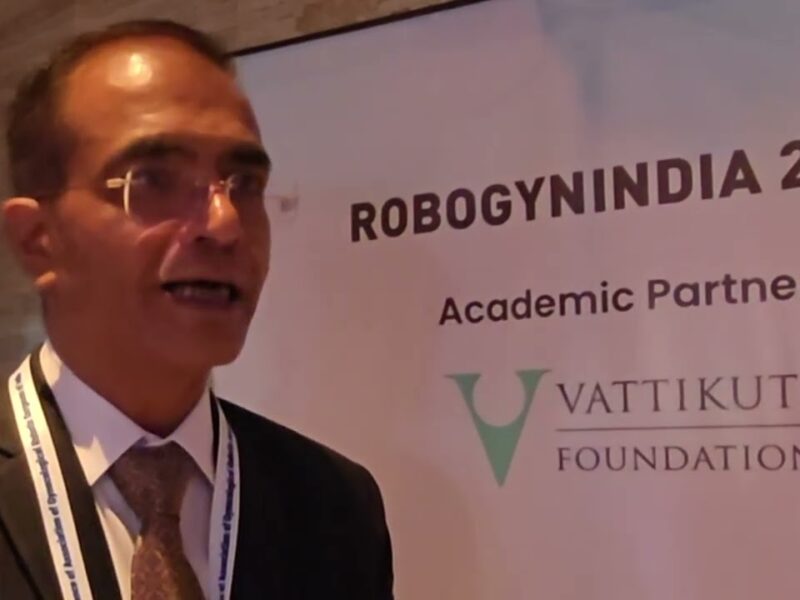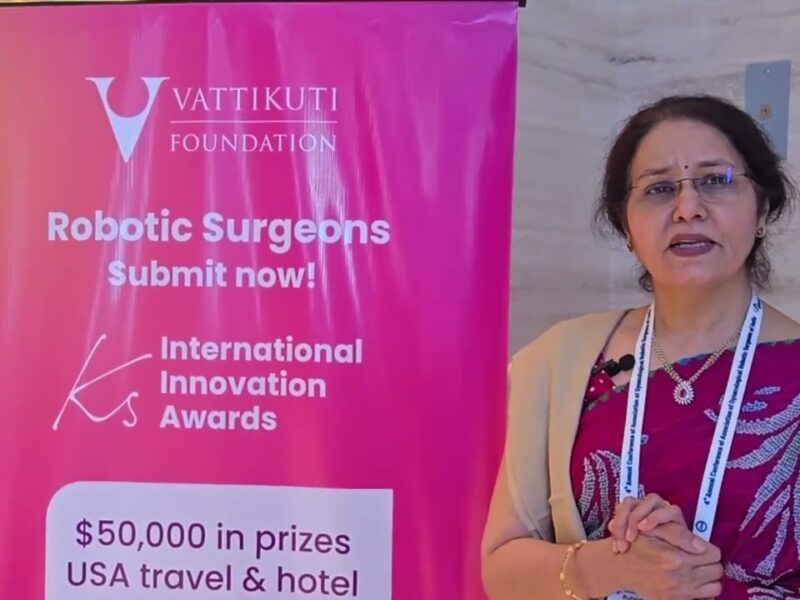#357 Robotic bilateral cortical sparing Adrenalectomy- Dr. Saurabh Patil
This is one of the 2023 KS International Innovation Awards videos selected for inclusion in the Vattikuti Foundation – ORSI Humans at the Cutting Edge of Robotic Surgery Conference, October 6, 7 & 8, 2023 in Ghent, Belgium. Posting does not imply that is has been selected as a Finalist, just that the content will be discussed at the Conference.
From the entry: Robotic bilateral cortical sparing adrenalectomy with a paraganglioma excision: a rare and complex three quadrant robotic surgery
Introduction: Bilateral pheochromocytomas are rare and usually seen in familial syndromes. Total adrenalectomy in such cases renders patients steroid dependent for life. Cortical-sparing avoids the need for lifelong steroid supplementation, which outweighs the risk of recurrence. We hereby present our experience with such surgery with an aim to highlight the intricacies involved in intra- operative execution along with the benefits of the robotic approach in simplifying the complexities.
Methods: A 14-year-old boy was noted to have asymptomatic sustained hypertension. On imaging evaluation, large masses in bilateral supra-renal regions and a small mass in the presacral region were seen, confirmed to be functioning pheochromocytomas on metabolic evaluation and on metaiodobenzylguanidine (MIBG) scan. After an adequate alpha and beta blockade patient was planned for a bilateral cortical sparing adrenalectomy.
Results: With the help of a robotic (daVinci Xi) approach, adrenal cortex could be preserved bilaterally. Due to multi-quadrant tumours, multiple ports and redocking was required, however, we utilised some of the ports. Surgery was uneventful with a blood loss of 400 ml and a console time of 290 minutes. Patient recovered smoothly, his post-operative blood pressure, nor-metaphrine came to normal levels immediately after surgery and steroid levels were normal.
Conclusions: Cortical sparing adrenalectomy is a complex but feasible surgery. Robotic approach makes it a safe and minimal invasive especially for such multi-quadrant tumors. Pre-operative planning and knowledge of intra-operative surgical principles are important for successful outcomes.
See more at: https://vattikutifoundation.com/videos/
Date
August 15, 2020






